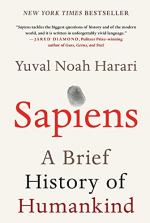|
This section contains 1,223 words (approx. 4 pages at 400 words per page) |

|
Summary
Chapter 17 briefly describes the industrial revolution. Particularly in recent history, Harari argues that humans always seem to develop methods to obtain more raw materials and energy just as previous supplies are running out. Prior to the Industrial Revolution humans faced significant limits on available energy sources. They were also unable to convert one form of energy to another, for example converting heat to movement. The only conversion mechanism was the process of eating and expending energy, thus everything relied on the muscle power of humans and livestock. This changed dramatically with the invention of the steam engine which, for the first time, allowed humans to convert heat to movement. Subsequent sources of power like petroleum and nuclear fission rely on the same concept. Industrial advances also allowed us to manufacture raw materials like aluminum and plastic, decreasing the cost of finished products. Harari...
(read more from the Chapter 17 - 18 Summary)
|
This section contains 1,223 words (approx. 4 pages at 400 words per page) |

|




